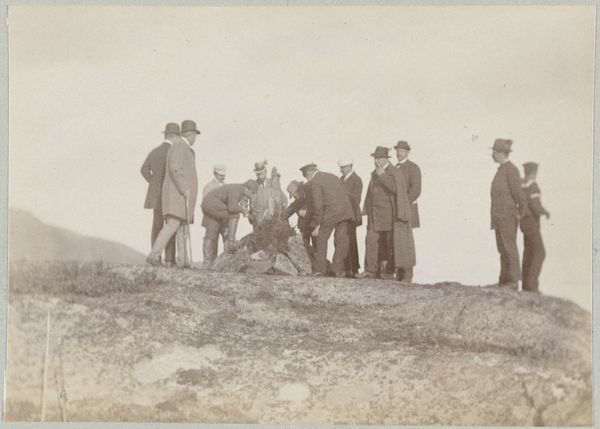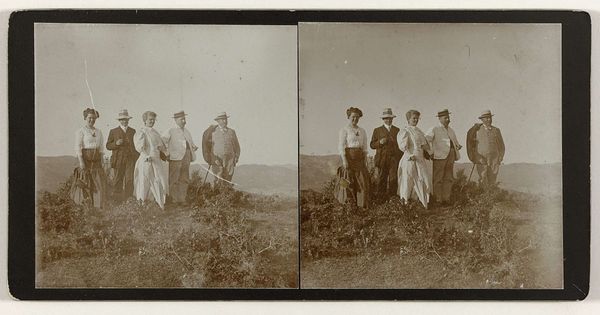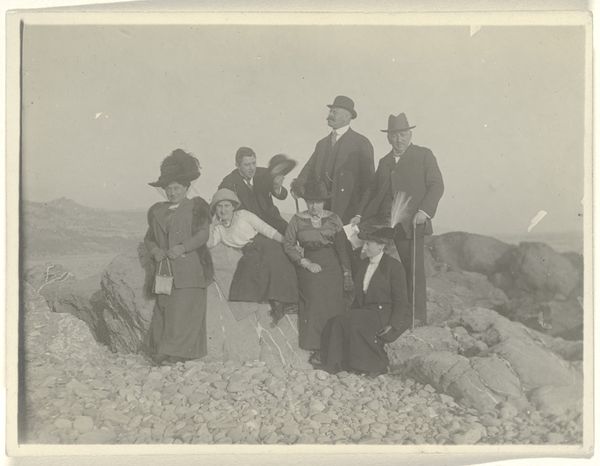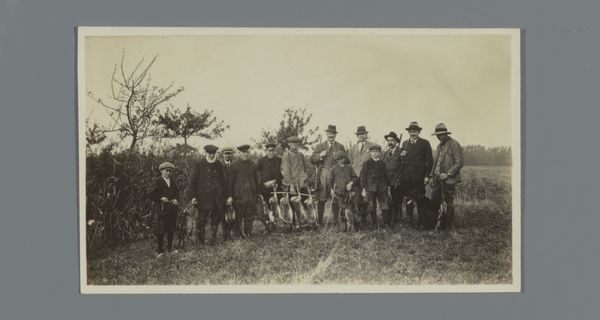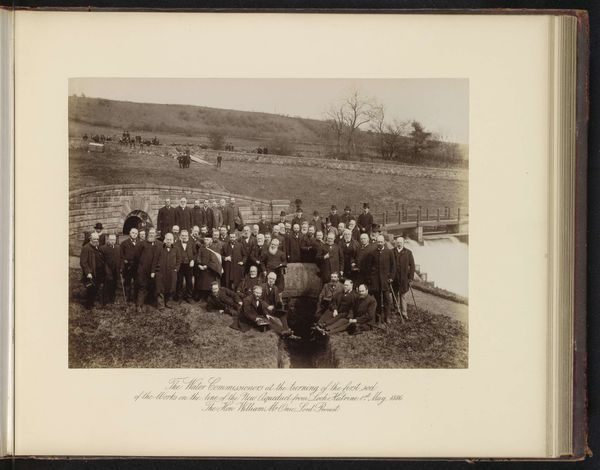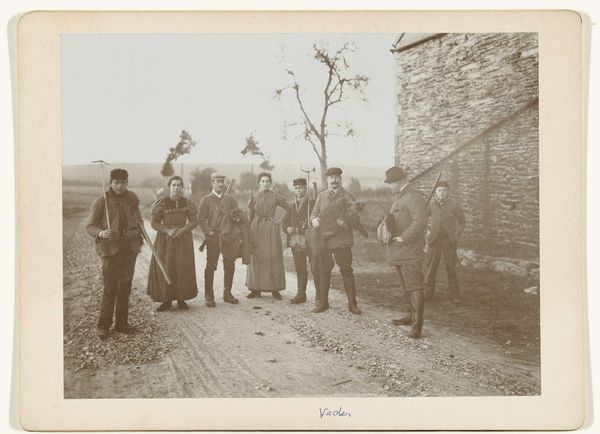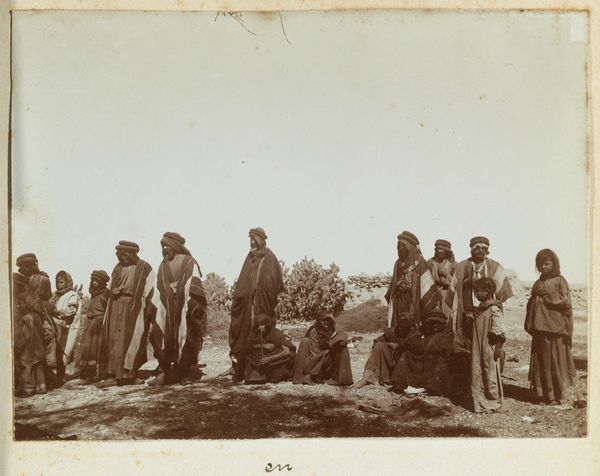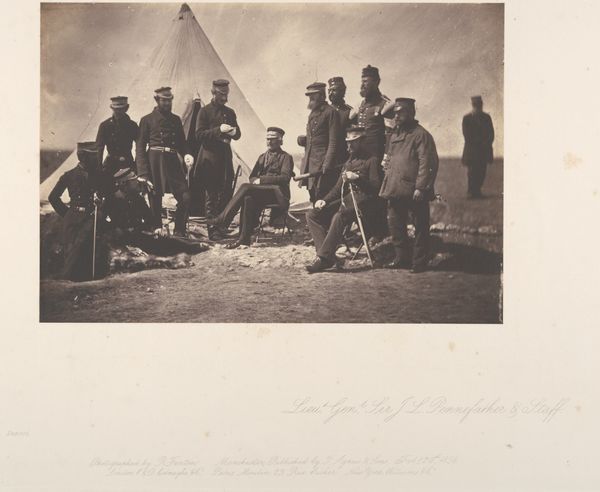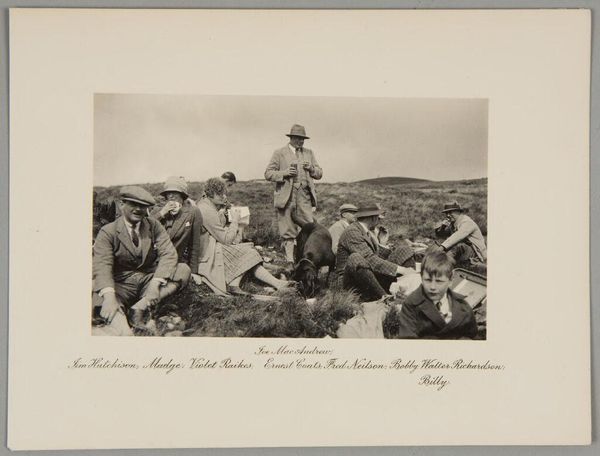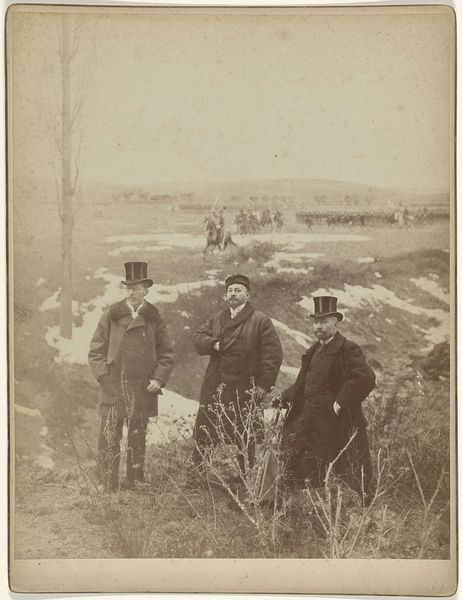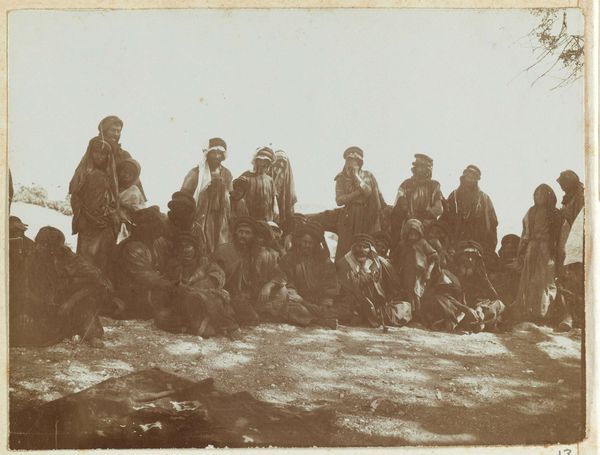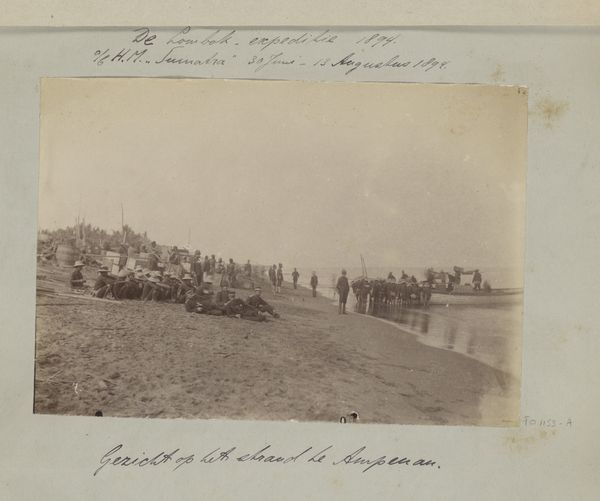
photography
#
portrait
#
pictorialism
#
landscape
#
photography
Dimensions: height 80 mm, width 112 mm, height 314 mm, width 450 mm
Copyright: Rijks Museum: Open Domain
This photograph, taken by Paul Güssfeldt, captures Kaiser Wilhelm II and his entourage at a scenic overlook in Lofoten. The material is photographic paper, a relatively new medium at the time, made possible by industrial advancements in chemistry and manufacturing. The process of photography itself is central to understanding this work. Light, captured through a lens, chemically alters the surface of the paper. The tonal range, from light grays to near blacks, reveal the scene: the Kaiser’s retinue formally arranged on a rocky outcrop. Two men, likely local guides, attend to a small cairn, perhaps placing a marker of the Kaiser’s visit. The photograph’s value lies not just in its aesthetic qualities, but in its capacity to document and disseminate power. Photography, as a technology, democratized image-making to a degree. Yet, in this instance, it serves to reinforce social hierarchies, immortalizing the Kaiser's imperial gaze over the Norwegian landscape. Considering photography through its materials and making invites us to rethink traditional notions of art, and to recognize the power dynamics inherent in all forms of representation.
Comments
No comments
Be the first to comment and join the conversation on the ultimate creative platform.
